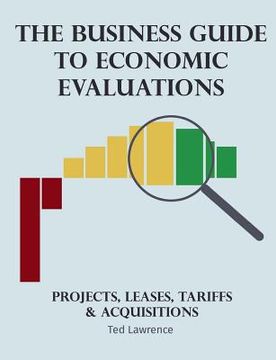The Business Guide to Economic Evaluations: Projects, Leases, Tariffs & Acquisitions
Synopsis "The Business Guide to Economic Evaluations: Projects, Leases, Tariffs & Acquisitions"
Undertaking economic evaluations of projects and business costs is a crucial function performed by companies on behalf of their shareholders to ensure that capital is invested prudently. This guide describes the underlying concepts, measurements and methodologies used by businesses for: evaluating the economics of investing capital in a project; deciding whether to purchase or lease; deriving a cost-of-service (tariff) fee; determining a bid price for an asset or entire company; removing embedded financing costs from project cash flows; deciding whether to keep or sell project component inventory for a deferred project; and, applying special purpose valuation formulas.This guide is written for project economists, corporate managers, business students, contract lawyers and anyone interested in learning about economic evaluations. No prior knowledge of this subject matter is required. Approximately 50% of this guide is devoted to the first topic which examines the economic feasibility of investing capital in a project. Project cash flows are defined, certain forms of project costs are restructured, and a typical project investment cash flow profile is examined. The meaning of capital, supply and flow of capital, and cost of capital are described. Economic profitability is measured using the net present value, payout, internal rate of return, and capital efficiency index measures. In-depth descriptions of these four measures are provided and their applications illustrated through simplified numeric examples. A de-financing procedure is applied to remove embedded financing costs from lease and cost-of-service fees to avoid distorting the economic measures. The remaining topics are described from first principles and are illustrated using simplified numeric examples. The three topics describing the derivation of cost-of-service (tariff) fees, the de-financing of project cash flows, and the determination of bid purchase prices for assets and entire companies are specialized topics not easily located in current financial literature. This guide is divided into two parts. Part A provides overview explanations of concepts, measurements, and methodologies for all topics and utilizes numeric illustrations at summary levels. Part B describes in more detail the calculations, concepts, methodologies and algebra used to derive the results presented in Part A. With this construct, readers can choose to limit their reading to Part A to obtain a high-level understanding of key concepts and methodologies or readers can choose to dig into the numeric details and explanations by reading Part B as well to develop a more comprehensive understanding. All calculations are displayed and carefully described but calculations do not explain meanings. To explain meanings, creative illustrations and analogies are utilized extensively throughout this guide. For example, the concept of economic profit is carefully developed and utilized to explain the concept of net present value in a manner not found in other financial books. Analogies are drawn to the common bank savings account to illustrate the meaning of certain economic measures. The difficult concept of cost of capital is explained by treating cost of capital as a cash fee paid by a project to its parent company. This cash fee is divided into three cash components: debt interest payments, stock dividend payments, and a share-value-increase amount determined by financial theory. Explanations are supported by diagrams, point form summaries, simplified numeric examples and bar charts in 278 figures spread over 300 pages.

